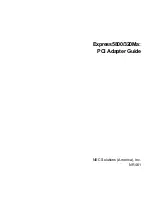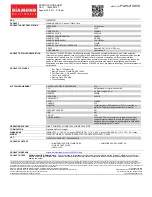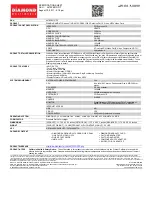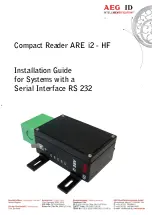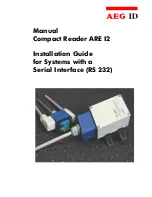
EP-USB66
Page 18
Appendix
When I boot up my computer I get a floppy (or hard drive) failure.
Is my motherboard and/or EP-USB66 card bad?
With your floppy, and most other devices, it is very important that all cables line up
to pin 1. Most cables have a colored stripe on them. That color stripe must line up to
the pin 1 on the IDE controller port. If a floppy has no light come on, or the light
stays on and never turns off, then the cable is on backwards, not at all, or incorrectly,
either at the board end or the floppy end. If your hard drives or CD-ROMs are not
detected then the cables might not be right. If you have checked your cables also look
at the jumper settings on the back of the device (set for master/slave, etc).
I just installed a new hard drive, and I can't use it. Why?
Before a new hard drive can be accessed it must be properly recognized by the
motherboard BIOS if attached to the motherboard’s onboard IDE controllers. Use the
CMOS utility and perform an IDE HDD AUTODETECT or you can optionally enter
the parameters for the drive yourself. For hard drives over 512MB be sure the BIOS
uses LBA mode so the operating system can have access to the total available space.
For drive’s attached to the EP-USB66 no BIOS detection is needed as the card’s BIOS
should automatically detect any IDE device attached.
Most new hard drive's do not come partitioned or formatted. You must run FDISK.
EXE (in DOS or Windows 95/98), and create DOS partition. When complete, re-boot,
then format the hard drive. Type "format x:" without the quotes and replace x with the
drive letter of the new drive. Windows 95 OSR2 and Windows 98’s FDISK.EXE
program may ask if you want to use FAT32. This is for larger drives (over 2.1 gig).
The maximum size that a single partition may be is about 2.1 gig using DOS and
FAT16.
Windows NT users can use the Disk Administrator utility to prepare the new hard
drive for access.


















